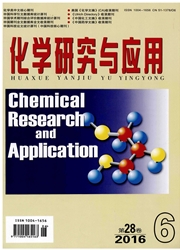

 中文摘要:
中文摘要:
时间分辨荧光技术是研究超分子组装微环境变化的主要手段之一。荧光体与蛋白质、内膜及胶束等相互作用引起最大荧光强度和量子效率急剧变化反映了激发态反应情况,激发态过程通常用时间分辨发射光谱(TRES)测定。国内在这一领域的研究虽有成果,但与国外相比仍有一定差距。本文对时间分辨荧光光谱的应用研究进展进行了综述,阐述了其历史、原理、检测方法及近几年国内外的应用研究进展情况。
 英文摘要:
英文摘要:
Time-resolved emission spectroscopy(TRES) is one of the major tools for the characterization of microenvironments in supramolecular assemblies.The dramatic changes in fluorescence maxima and quantum yields often observed when fluorophores interact with proteins,membranes and micelle are reflections of exicted-state reactions.Excitated-state processes are usually studied by measurement of TRES,which is fluorescence emission spectra obtained at discrete times during the fluorescence decay,and the fluorescence intensity is the function of time and wavelength.Although our country has got some fruits in this are,in comparison with foreign countries,there is still a lot of work to strengthen.In the present paper,the authors reviewed the latest research progress in its application,described its principles and history of TRES,measuring methods,and recent progress in application.
 同期刊论文项目
同期刊论文项目
 同项目期刊论文
同项目期刊论文
 Anticoagulant surface of 316 L stainless steel modified by surface-initiated atom transfer radical p
Anticoagulant surface of 316 L stainless steel modified by surface-initiated atom transfer radical p Synthesizing and characterization of comb-shaped carbazole containing copolymer via combination of r
Synthesizing and characterization of comb-shaped carbazole containing copolymer via combination of r Preparation and characterization of novel main-chain azobenzene polymers via step-growth polymerizat
Preparation and characterization of novel main-chain azobenzene polymers via step-growth polymerizat 期刊信息
期刊信息
